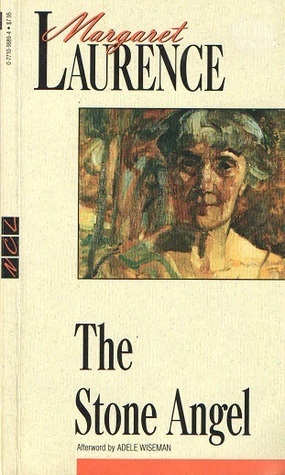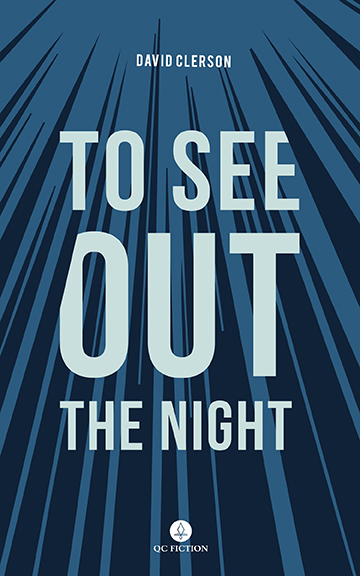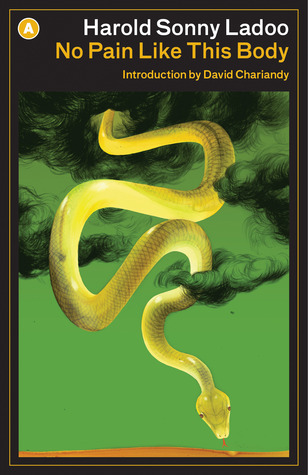In attempting to review this book, I can think of no better place to begin than with the first passages of the author’s preface:
The intensity of these accounts, the imprint they leave on me, does not lessen with each telling.
A quarter of Cambodia’s population died during the genocide; the remaining three-quarters were physically and mentally debilitated.
US bombings, the Khmer Rouge genocide, toxic and carcinogenic exposure, incarceration, urban and rural divestment, deportation.
In this book, theory, fiction, and autobiography blur through allusive fragments. These fragments—a perforated language of cracks and breaks—seek to knit together, however imperfectly, the lifeworlds that inspire me to write here, on this page.
I was made aware of Landbridge by Y-Dang Troeung via an article by the author’s close friend, novelist Madeleine Thien. My knowledge of the details of the Cambodian genocide is limited; I was young at the time and I’m afraid that my historical understanding of the wars in Southeast Asia is more informed by Hollywood than the stories of survivors. However, the onset of war in Gaza inspired me to learn more about other genocides because, as Troeung says, Cambodia was not the first, nor will it be the last. And then there was the extra heartbreak of knowing that the author died of cancer (a legacy of the toxic and carcinogenic exposure she mentions above, in utero and during her first year of life) just months before this book was published.
But I was not prepared for the singular power of this work.
 Through a series of fragments, interspersed with letters to her young son, Troeung writes about the experiences of her family—her parents and two older brothers—during Pol Pot time: years spent hiding, working in forced labour camps, starving and, finally, escaping to Thailand. She talks about coming to Canada at the age of one, growing up in a small town in Ontario, the complicated strangeness of life as a refugee, and her efforts to reconnect with her ancestral land and make some sense of the horror that unfolded there and, finally, the process of coming to terms with a terminal diagnosis. The story, or stories, she wishes to tell unfold in pieces, moving back and forth in time, generously illustrated with photgraphs, documents and art. She is raw and open about her own experiences, but sensitive to the respect that must be afforded to those that belong to others. Her voice is measured and thoughtful, but not without emotion. Her anger and pain is real. So is her innate optimism. This is more than a memoir—it is a personal journey shared.
Through a series of fragments, interspersed with letters to her young son, Troeung writes about the experiences of her family—her parents and two older brothers—during Pol Pot time: years spent hiding, working in forced labour camps, starving and, finally, escaping to Thailand. She talks about coming to Canada at the age of one, growing up in a small town in Ontario, the complicated strangeness of life as a refugee, and her efforts to reconnect with her ancestral land and make some sense of the horror that unfolded there and, finally, the process of coming to terms with a terminal diagnosis. The story, or stories, she wishes to tell unfold in pieces, moving back and forth in time, generously illustrated with photgraphs, documents and art. She is raw and open about her own experiences, but sensitive to the respect that must be afforded to those that belong to others. Her voice is measured and thoughtful, but not without emotion. Her anger and pain is real. So is her innate optimism. This is more than a memoir—it is a personal journey shared.
Troeung’s unusual name, Y-Dang, honours international workers at the Khao-I-Dang refugee camp in Thailand who cared for her family after their dangerous trek through land mined jungles to reach the Cambodian border. After arriving in Canada as refugees, they were given new winter clothing and photographed meeting Prime Minister Pierre Trudeau. The final stage in their journey would take them to Goderich, Ontario—home of Alice Munro where volunteers helped them adjust to a their new home, learn English, and find jobs and schools. Having already survived so much, the newcomers were resourceful. Troeung describes waiting in the car on rainy nights while her family salvaged for earthworms in the local cemetery with cans tied to their ankles. They were part of an underground network of refugees who collected and sold worms to fishermen to use as bait. This additional income would help them save for their future. She reports that the family experienced both welcome and antagonism in their new hometown, but notes that distrust of foreigners has become worse over time. Refugees seem to be particular targets of late.
For the refugees themselves, however, there were challenges and contradictions others might not appreciate. Certain expectations colour the way one learns to integrate a tragic past with what, given luck and years of hard work, had ideally become a comfortable present. Refugees were expected to show happiness and gratitude for the privilege of a new lease on life, while their past experiences were subject to interpretations approved by others. There were things, Troeung found, that she was only allowed to speak about in a certain way such as “War in the abstract as if what happened to us was an abstract thing.” But this was not something that only occurred in her life and studies in Canada, it followed her back to her homeland as she discovered during the years she lived in Hong Kong and visited Cambodia regularly.
She writes about watching, in a courtroom near Phnom Penh, lawyers debate the ECCC’s 2014 verdict convicting Nuon Chea, second-in-command to Pol Pot and Khieu Samphan, Cambodia’s head of state during the Khmer Rouge, of crimes against humanity and genocide. The question is, of course, is genocide not defined as an act by one racial or religious group against another? If so, can Communism be considered under either category?
I’m beginning to lose hope in definitions, and perhaps in language itself. As the lawyers declare the importance of reserving certain words for some peoples and not others, I do not laugh or cry or shout. Instead, I marvel at what is happening before us in this country, at the machinations of an entire legal-humanitarian-academic industry, speaking for the millions of Cambodian people still left grieving with open wounds.
Throughout this book, the ongoing events in Syria form a point of reference and empathy for Troeung. She thinks about what the Syrians are going through often, with empathy and concern. Reading Landbridge today, in late 2023, while the war in Gaza fills the news and genocide is a word that is being simultaneously denied and weaponized, one can only imagine how deeply she would be pained.
Landbridge does not pretend to be a formal historical exercise, complete with exhaustive details and dates, rather it is an intensely personal account that gathers together memories, pieces of lost information, and accounts of visits to museums and memorials, with records of significant stages in the slow reckoning that the horrors that unfolded Cambodia, like so many others in recent times, have received in public forums. It is a sad indictment. So many times the experiences of her family and her people during the war are devalued, or deemed to be of insignificant interest to Western audiences, while at other times her ability and her right to tell those stories is questioned against the expertise of dedicated Western scholars.
Subtitled, in brackets, life in fragments, Lifebridge is an extraordinary book, one that carries so much in its short, pensive passages. It is a search for understanding, of the self and of the history, traumas and challenges that shaped her parents’ and siblings’ lives and, in turn, her own life, for war does not end for those who survive, even when the bombs stop dropping and the killing fields are designated a historical site. Troeung recognizes so much of that fallout in her parents, aunts and uncles. And she carries it in her body as cancer spreads. But she is also fully aware of the strength and resilience her family has always shown. As she writes to her son, Kai:
Stories of the dead and suffering need not drop you in stillness. They can instead show us that our very lives are miracles, that every day since Pol Pot time has been a gift. Our family has always lived that way.
As the book nears a close, one can only marvel at the peace and resolve that seems to settle into her words, for this is also a love story—for her family, her husband and her child—one that achieves its fullest expression in the letters she writes to Kai, first to mark his earliest birthdays, then reaching into the future, as missives for the birthdays she is afraid she will not live to see. The wisdom, the composure and the unconditional love she offers the child he is and the man he may become are a precious gift that we, as readers, are privileged to share.
Lifebridge [life in fragments] by Y-Dang Troeung is published by Alchemy, an imprint of Knopf Canada, and in the UK by Penguin.










